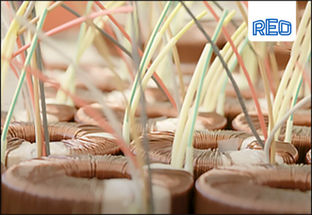Disadvantages of Toroidal Transformers
While toroidal transformers offer several advantages, it is also essential to consider their potential disadvantages. One of the main drawbacks of toroidal transformers can be their cost. Compared to other types of transformers, such as laminated or EI core transformers, toroidal transformers tend to be more expensive due to their complex manufacturing process and use of high-quality materials.
While toroidal transformers are known for their impressive efficiency, they have a drawback regarding power limitations due to the specific winding technique used, where wire is transferred from a main spool to a circular magazine and then unwound onto the magnetic core. If you want to learn more about this process, please see this informative video. It’s worth noting that the thickness or gauge of the wire is typically restricted to 4. 5 mm. Combined with electromagnetic design and thermal considerations, it limits the maximum power per core to around 6000 VA. Of course, these figures can vary depending on voltage requirements, number of windings, and other factors.
When it comes to toroidal transformers, repairing a faulty one can pose some challenges. Their unique design and construction may require sourcing specific replacement parts or seeking specialized repair expertise; this means the process can be more complex and potentially more expensive than other types of transformers. However, it is rarely economical or safe to try and repair a toroidal transformer, and we would always recommend replacing a faulty one – this is usually a lot less expensive and safer in the long run!
Despite these disadvantages, it’s important to note that toroidal transformers still have many benefits that make them a popular choice in various applications. However, understanding the potential drawbacks allows for informed decision-making when selecting the appropriate type of transformer for a specific application.










